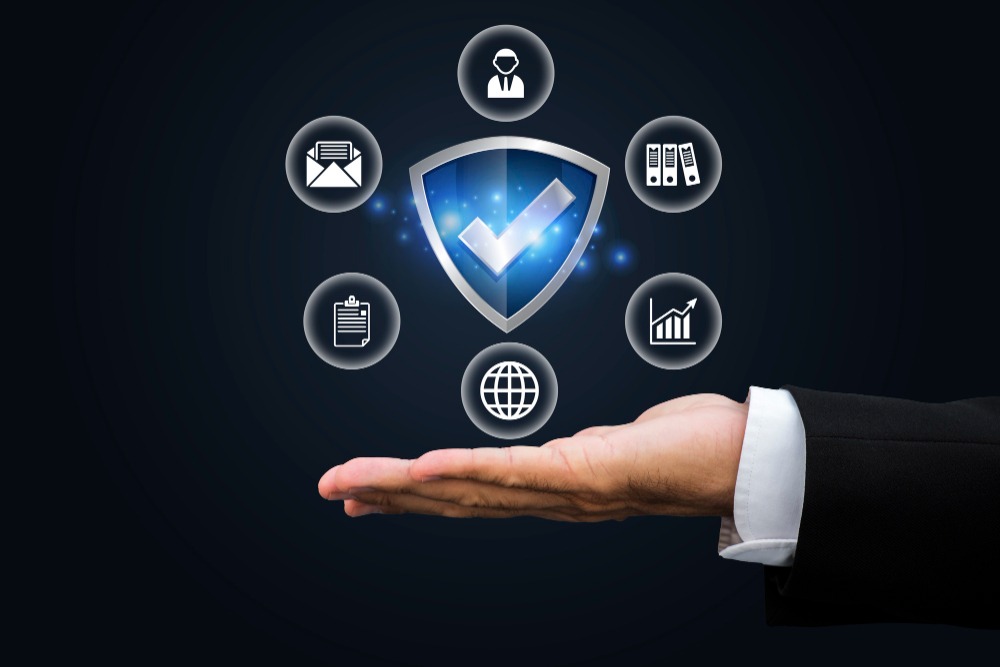The digital age has revolutionized the way we manage our finances. While convenience abounds with online banking, mobile payments, and digital investments, these advancements come with new security risks. Cybercriminals are constantly devising sophisticated tactics to exploit vulnerabilities and steal your hard-earned money.
This comprehensive guide empowers you to safeguard your financial assets in the digital age. We’ll explore the evolving cyber threat landscape, equip you with essential security practices, and guide you towards building a fortress around your financial accounts.
Understanding the Digital Threats:
- Phishing Attacks:
Phishing emails or messages appear to be from legitimate sources (banks, credit card companies) and trick you into revealing sensitive information like login credentials or account details.
- Malware:
Malicious software (malware) like keyloggers can be installed on your device through deceptive downloads or infected links. Malware can capture your keystrokes, passwords, and financial information.
- Man-in-the-Middle Attacks:
Cybercriminals intercept communication between your device and a website or online service, potentially stealing your data in transit. Unsecured public Wi-Fi networks are particularly vulnerable.
- SIM Swapping:
Criminals may gain control of your mobile phone number through a process called SIM swapping, allowing them to access verification codes and potentially take over your financial accounts.
- Social Engineering Attacks:
These attacks leverage psychological manipulation. Cybercriminals may pose as customer service representatives or use personal information gleaned from social media to gain your trust and extract sensitive financial data.
Building a Secure Financial Fortress:
- Create Strong Passwords and Utilize Multi-Factor Authentication (MFA):
- Unique and Complex Passwords: Avoid using birthdays, pet names, or easily guessable information. Utilize strong passwords with a combination of uppercase and lowercase letters, numbers, and symbols. Consider using a password manager to generate and securely store unique passwords for all your accounts.
- Multi-Factor Authentication (MFA): Enable MFA whenever available. This adds an extra layer of security by requiring a secondary authentication factor, like a code sent to your phone, in addition to your password.
- Be Wary of Suspicious Emails and Links:
- Scrutinize Sender Addresses: Always double-check email sender addresses. Misspellings or slight variations from legitimate companies are red flags.
- Don’t Click on Unfamiliar Links: Never click on suspicious links or attachments in emails, even if they appear to be from a known source. If unsure, contact the supposed sender directly through a verified phone number or website.
- Beware of Urgent Requests: Phishing emails often create a sense of urgency to pressure you into acting impulsively. Take a step back and verify the information before taking any action.
- Prioritize Secure Connections:
- Secure Wi-Fi Networks: Avoid using public Wi-Fi networks for sensitive financial transactions. If necessary, utilize a Virtual Private Network (VPN) to encrypt your internet traffic.
- HTTPS Connections: When accessing financial websites, ensure the address bar displays “https” with a padlock symbol. This indicates a secure connection.
- Keep Your Devices and Software Updated:
- Operating System Updates: Regularly update your operating system (Windows, Mac, iOS, Android) and software applications to patch security vulnerabilities that cybercriminals might exploit.
- Antivirus and Anti-Malware Software: Install and maintain reputable antivirus and anti-malware software on all your devices. Regularly scan your devices for threats.
- Monitor Your Accounts Regularly:
- Review Transactions: Frequently review your bank statements and credit card transactions for any suspicious activity. Early detection can minimize potential damage.
- Enable Account Alerts: Set up account alerts to receive notifications for any unusual login attempts, transactions exceeding a certain amount, or changes to your account information.
- Practice Social Media Savvy:
- Beware of Oversharing: Avoid sharing personal information like your birthdate, address, or financial details on social media platforms. This information can be used for social engineering attacks.
- Privacy Settings: Review and adjust your social media privacy settings to limit access to your personal information.
Beyond the Basics: Additional Security Measures
- Consider Biometric Authentication: If available, utilize fingerprint scanning or facial recognition for an added layer of security.
- Be Wary of Public Charging Stations: Avoid using public charging stations for your devices, as these can potentially be compromised to steal data.
- Secure Your Home Network: Use a strong password for your Wi-Fi network and enable network encryption (WPA2 or WPA3).
Conclusion: Building a Digital Fortress Around Your Finances
The digital age has transformed financial management, but it also presents new security challenges. This comprehensive guide has equipped you with the knowledge and tools to protect your financial assets.


